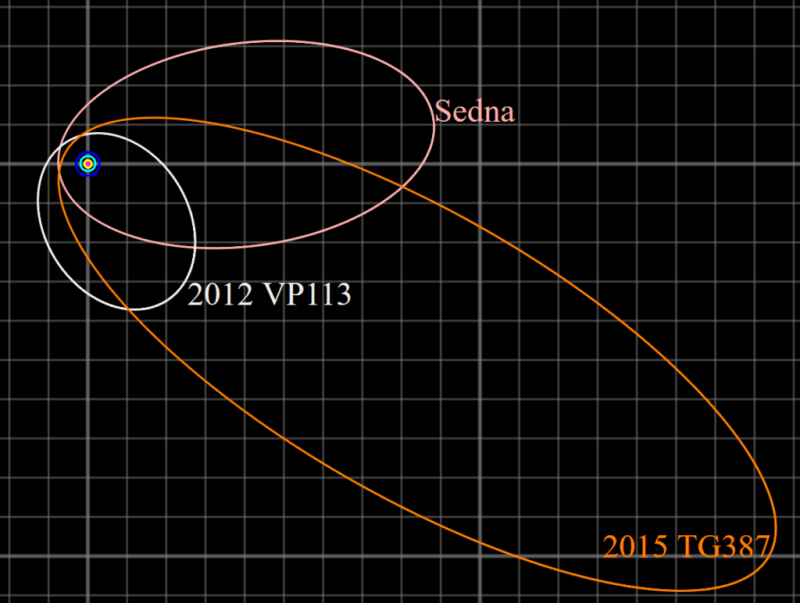The Search for Planet 9: Unveiling the Secrets of Our Solar System
Written on
Chapter 1: The Mysterious Planet 9
Recent findings suggest that a ninth planet may be hiding in the depths of our solar system, potentially influencing the orbits of the Sednoids and other extreme trans-Neptunian objects (ETNOs).

The earliest records of planets visible to the naked eye date back to the 8th century BCE, documented by Babylonian astronomers. Nabu-rimanni, recognized as the first Babylonian astronomer, devised mathematical methods to track the movements of Mercury, Venus, Mars, Jupiter, and Saturn. It wasn't until much later, in the 18th century, that telescopic advancements led to the discoveries of Uranus and Neptune, the latter confirmed as a planet only a century later. Pluto followed in 1930 but was reclassified as a dwarf planet in 2006.
Despite extensive searches, no additional planets have been identified past Neptune's orbit. Current models of the solar system indicate that a massive body located beyond Neptune is unlikely. However, the discovery of Sedna in 2003 changed the narrative.
Section 1.1: Understanding ETNOs
Sedna is a fascinating trans-Neptunian object (TNO), with its orbit extending well beyond Neptune. While many TNOs exist, primarily in the Kuiper Belt, they generally follow predictable paths ranging from 30 to 50 astronomical units (AU) from the Sun. An AU is defined as the average distance between Earth and the Sun.
Sedna's orbit, however, is highly eccentric and inclined approximately 15 degrees from the elliptical plane. Its eccentricity is measured at 0.84961, starkly contrasting with Earth's minimal eccentricity of 0.017. Sedna's aphelion (farthest point from the Sun) is about 937 AU, while its perihelion (closest point) is slightly above 76 AU, presenting an unusual pattern compared to other celestial bodies.
In 2012, astronomers discovered VP113, followed by Lele?k?honua (TG387) in 2015 and RR205 in 2021. These objects share similarly odd orbits, classifying them as Sednoids.

Currently, 29 ETNOs have been identified. While some eccentric orbits can be attributed to Neptune's influence, many cannot be accounted for, leading to the search for something missing.
Section 1.2: The Planet 9 Hypothesis
Following the confirmation of Neptune as a planet in 1846, astronomer Percival Lowell proposed the existence of Planet X, attributing unexplained anomalies in Neptune's and Uranus' orbits to a substantial distant body. George Forbes speculated in 1890 that two planets could lie beyond Neptune. However, Voyager 2's flyby in 1989 provided precise measurements that resolved these anomalies, dimming hopes of discovering a new planet.
With the discovery of Sedna and other ETNOs, interest in Planet 9 reignited. Recent studies support the idea that Planet 9 could explain the strange orbits of these distant bodies.
In 2021, researchers Brown and Batygin conducted 121 computer simulations, adjusting parameters such as mass, distance from the Sun, and eccentricity. They concluded that a planet with a mass 6.2 times that of Earth, located about 380 AU away, could account for the orbits of ETNOs. They maintained that "a massive planet on a distant inclined eccentric orbit remains the simplest hypothesis."
In a paper published in April 2024, Batygin, Morbidelli, Brown, and Nesvorny dismissed other potential explanations, such as galactic tides and the influence of larger planets. Their findings indicate that only by including Planet 9 do their models align with observational data.
Chapter 2: The Quest to Locate Planet 9
Despite theoretical models indicating Planet 9's existence, it has yet to be directly observed. If it does exist, it would be about 600 times less luminous than Pluto, reflecting minimal sunlight and emitting only a slight amount of infrared radiation. Its location is likely at maximum distance from the Sun, complicating detection efforts.
Batygin and Brown have scoured historical observations, analyzing data from the Wide-field Infrared Survey Explorer, the Catalina Sky Survey, and the Zwicky Transient Facility, without success. They noted, “This survey rules out 56% of predicted Planet Nine phase space.” However, areas toward the aphelion and near the Milky Way's plane remain unexplored, leaving the possibility open.
Speculations exist that Planet 9 might be a primordial black hole, exerting gravitational influence yet proving difficult to detect directly.
Advancements in technology bring hope; the Vera C. Rubin Observatory, set to commence operations in 2025, promises to generate about 20 terabytes of data daily. Its unprecedentedly large camera may finally uncover Planet 9.
Video: Planet Nine Might Be Something Far Stranger Than a Planet
In this discussion featuring Kate Brown and Harsh Mathur, the potential existence and implications of Planet Nine are explored.
Video: Planet 9 with Mike Brown and Konstantin Batygin
Join Mike Brown and Konstantin Batygin as they delve into the search for Planet Nine and the evidence supporting its existence.